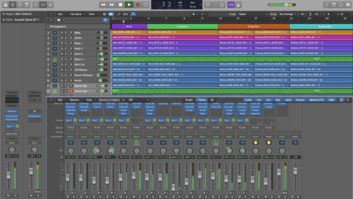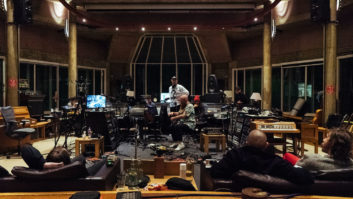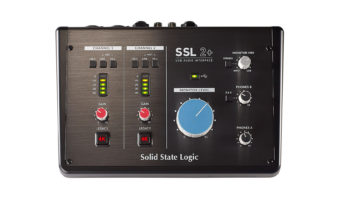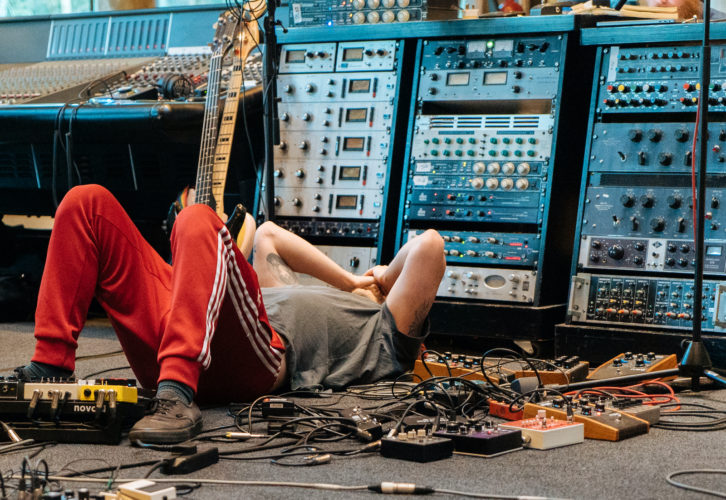
In the conclusion, IDLES talks recording drums to tape machine, guitars and vocals at Peter Gabriel’s Real World Studios in Bath, UK, then shares the entire 24-track mic input list. Don’t miss Part 1!
SPACE FOR DRUMS AND GUITAR
Real World’s scenic setting and state-of-the-art, well-appointed rooms provided an array of choice locations for IDLES to set up, and they took advantage of them all. A key decision was to record drums in The Wood Room for a “lively but natural sound,” says Middleton. “That room sounds beautiful on anything, but especially big- sounding drums. We had a bunch of room mics to get as much life out of the drums as a starting point before any processing.”
A 24-track tape machine was used strictly for recording drums, and they used every channel. “We sent a pre-fader submix of the drums to a Thermionic Culture Vulture and recorded the return to tape,” Middleton explains. “This was recorded along with the drums in real time. Likewise with the snare plate, an EMT 140, on some tracks. We were using a Studer 2-inch machine for all the drum channels. We ran the Record level pretty hot to tape and got some really cool sounds from it. We used the tape-recorded drums for most tracks, but we kept the straight-to-digital recordings, too, in case we preferred the drum tones that hadn’t been recorded via the tape machine.”
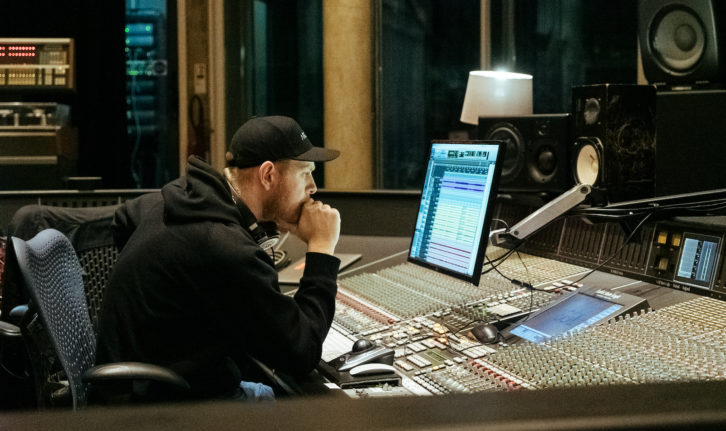
Quite a bit of the guitar tracking was done in The Wood Room, as well, taking advantage of the room mics to add “life and space to the sounds.” Middleton attributes Fullard’s time touring with IDLES for his miking techniques on Bowen’s and Lee Kiernan’s guitar amps. Says Middleton, “We used a combination of AKG C 414, Xaudia BM9, Sontronics Halo and Sennheiser MD421 mics on the guitar cabinets, usually two on each amp. The amps were all in isolated booths so we could overdub if necessary.” They were.
For the overdubs, Fullard says, “We set up three mics and a DI for Bowen’s guitars: BM9, AKG 414, Oktava MK-012. On [Kiernan’s] guitars, we did the three mics and a DI: BM9, M88, AKG 414. We used Neve preamps for all channels. The DIs on the guitar, we used as part of the sum of the overall guitar sound, not as a re-amp channel.”
Additional guitar tracking was done at Holy Mountain Studios, where the demos were recorded. There, they recorded through an API 1608 32-channel console, making full use of its preamps and EQ. For both Bowen’s and Kiernan’s amps, they used Royer R-121, Oktava MK-012 and Sennheiser MD 421 microphones. Also used at Holy Mountain was a selection of vintage amps: Sunn Model T, Hiwatt, Mesa Boogie combo and Orange.
RECORDING VOCALS
Vocalist Joe Talbot recorded his parts for different songs in different locations, both at Real World and at Holy Mountain. “Sometimes vibe, sometimes sound, sometimes just a change of scenery,” Beats says about the decision to change it up. “He wanted to feel like he was getting out of his comfort zone just as much as the band were.”
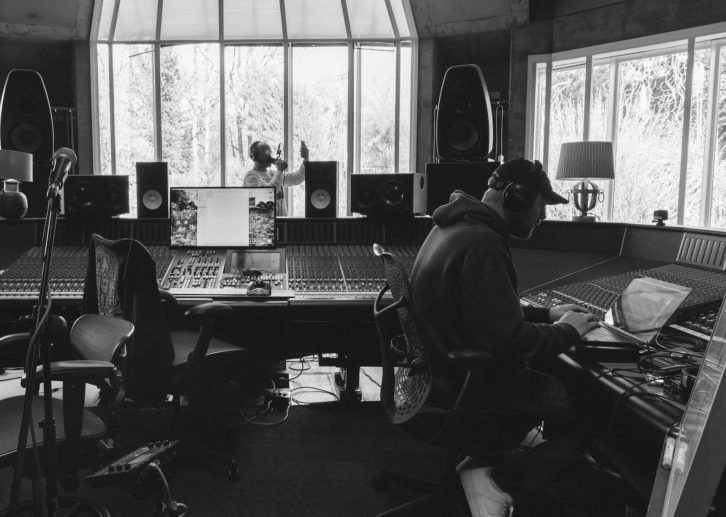
“[Talbot] ended up doing most vocals with [Beats] in The Big Room, in front of the mixing console, looking out the windows across the pond,” says Middleton. “For a couple of tracks, like ‘Wizz,’ we used the main space in The Big Room where all the guitars and bass were tracked. This was the most ‘live’ setup.
“Most of the tracking was a Shure SM7B into a Distressor or LA-2A, or a combination of both,” he continues. “We tried a Neumann U87 on some of these vocals, but the capsule kept blowing out on some of his louder, more aggressive stuff, which was obviously a massive issue when trying to capture full takes.
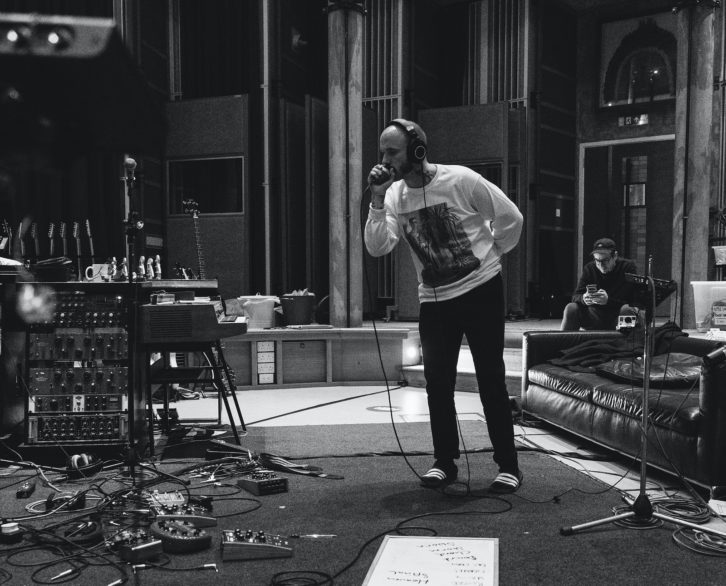
“Then we did some of the more delicate stuff like ‘MTT 420 RR,’ ‘Progress’ and ‘The Beachland Ballroom,’ for instance, in The Wood Room with me and [Beats]. [Talbot] sang these with the U87 into a Neve 1073 and then an LA-2A, which we had to ride a fair bit because of how dynamic his performance can be. ‘The Beachland Ballroom’ was only one full take, so we were super-relieved to capture that cleanly.”
Fullard adds, “We also did a few vocal bits at Holy Mountain. The vocal chain for that was the SM7B, a Distressor, and we used a Chandler preamp instead of the API’s pre’s.”
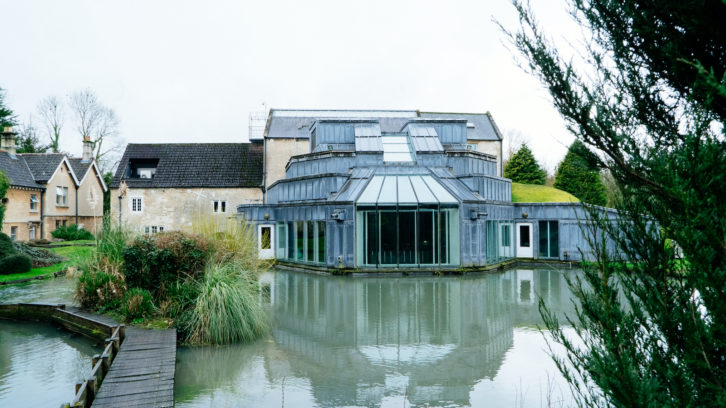
In the two weeks of recording, and week-and-a-half of refining at Real World, IDLES and their recording team spend 12 hours a day recording. Beats and Bowen spent an additional two hours a day listening to what they had done and discussing sonics and songwriting with the engineers.
“Every single night, we would sit there and say, ‘Did we hit the mark?’” Beats says. “What can we do to process and mix this stuff, put some panning in there, some effects of vocals, run things through echoes or tape delays or whatever it is? While the band is gone, let’s do all the work that makes stuff pretty, so every morning when the band gets back, they feel like it sounds great, then we can tell them what else we need to do. By boosting the confidence first, everybody’s ready to work hard.”
“Writing four albums in such quick succession meant that we could pay attention as we were going through, and retain a lot of the knowledge,” says Bowen. “We know what we want from recording an album. We know what we want from producers and engineers. We know what can be achieved. We know what aspects of rock ‘n’ roll we can ignore and what we can use in the modern world and open new doors and novel approaches to stuff, and what we can get out of that. It’s really exciting. I can’t wait ’til the next project.”
• • •
Remember Tape Machines?
IDLES took advantage of Real World’s Studer 2-inch analog tape machine to record drums in The Big Room. Producer Kenny Beats was so blown away by the analog options at Real World Studios that for the first time in a long while, we decided to publish a 24-track mic input list:
- Kick In – AKG D12 (also a Shure Beta 52 depending on the kit we used)
- Kick Out – Neumann Fet47
- Kick Sub – Yamaha NS10 Sub
- Snare Top 1 – Shure SM57
- Snare Top 2 – Oktava MK-012
- Snare Bottom – Shure SM57
- HH – AKG C451
- Tom1 – AKG C414
- Tom2 – AKG C414
- Tom3 – AKG C414
- OH Centre L – AEA R88
- OH Centre R – AEA R88
- OH Spaced L – Elam 251
- OH Spaced R – Elam 251
- Ride – AKG C451
- Mono Room- RCA DX77
- Room 1 L – Coles 4038
- Room 1 R – Coles 4038
- Room 2 Mezzanine L – Schoeps CMC6 with MK2 Capsules
- Room 2 Mezzanine R – Schoeps CMC6U with MK2 Capsules
- Culture Vulture Return L
- Culture Vulture Return R
- Spare
- Plate Reverb

